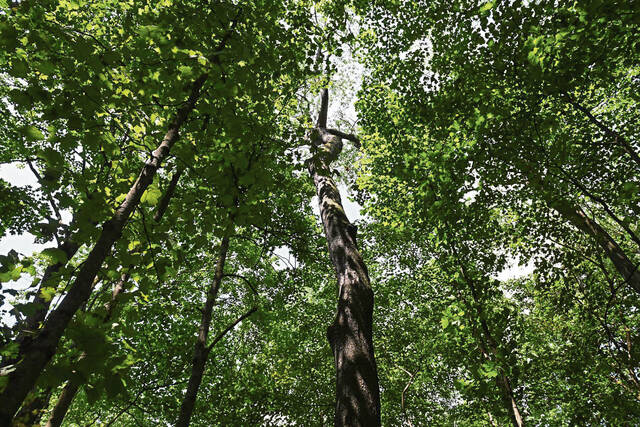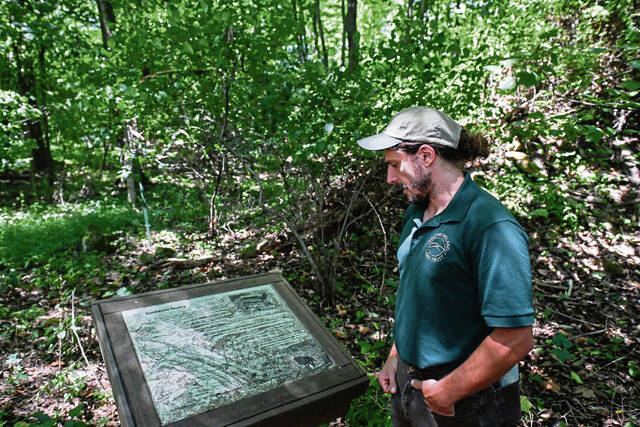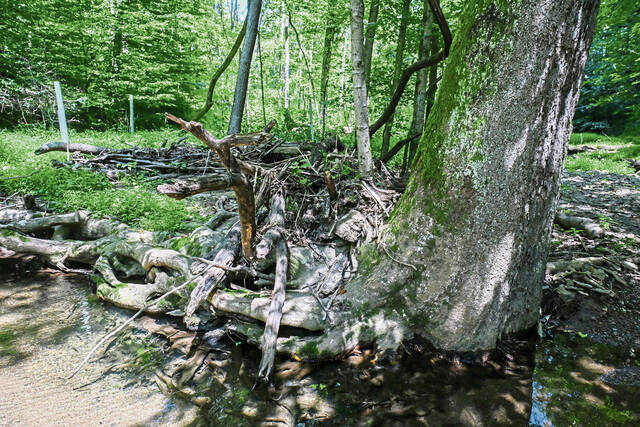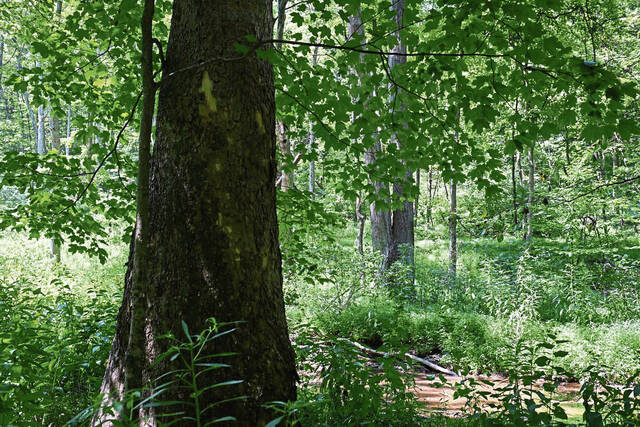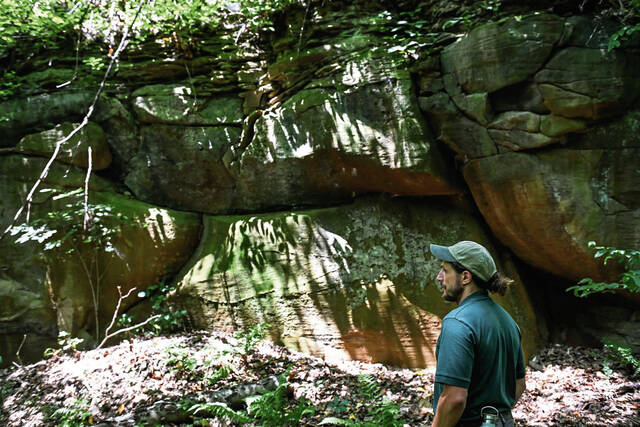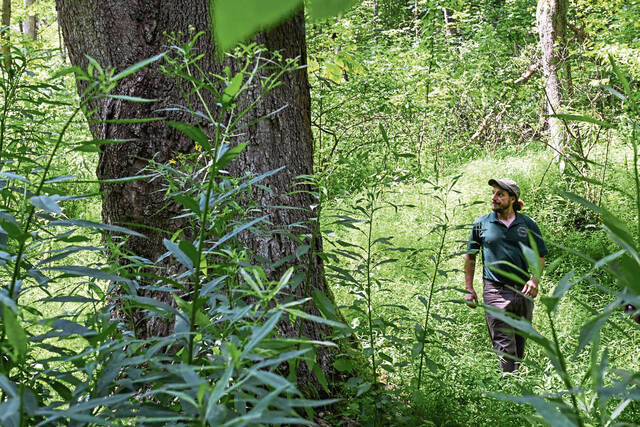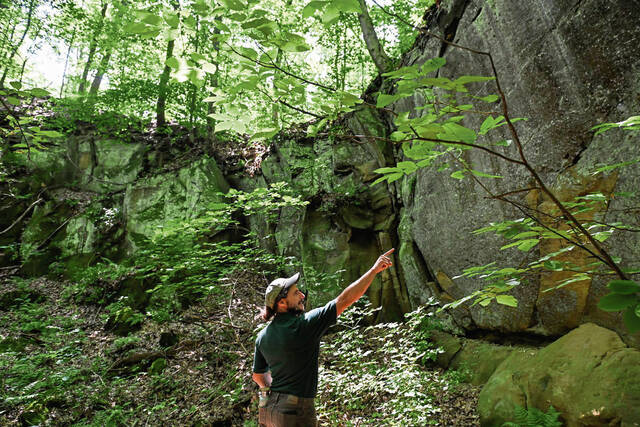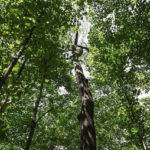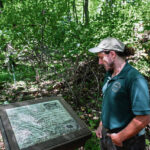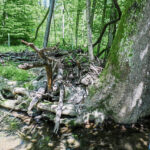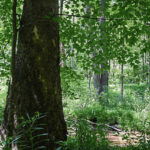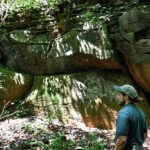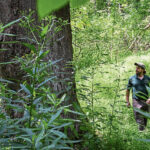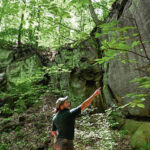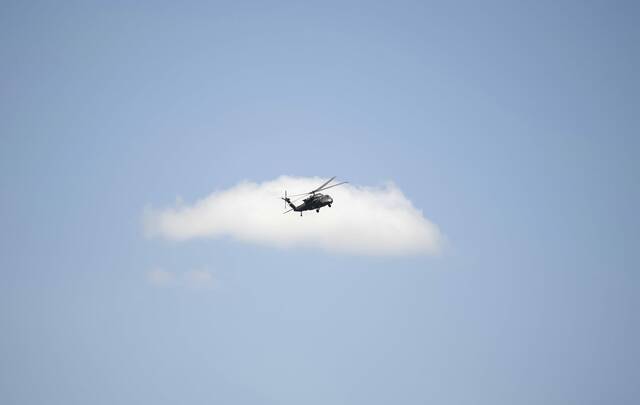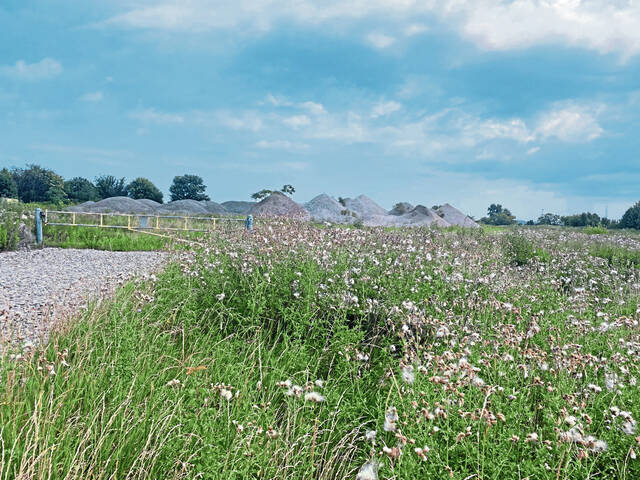Old-growth trees are much more than just an imposing sight to encounter in the forest, though many of them most certainly fit that bill, rising high into the sky and boasting massive trunks that would require at least two people to fully encircle.
They provide shade for the forest under-story, which can keep some types of invasive plants at bay.
They provide a home for hundreds of native animals, a trait that is amazingly magnified when they fall and hollowed-out areas offer safe haven for even more wildlife. And just like all flora, they consume carbon dioxide and release oxygen into the atmosphere.
Those are just a few of the reasons why Westmoreland Land Trust staff opted to apply to have the Ackermann Nature Preserve in North Huntingdon placed into the national Old-Growth Forest Network.
“When I started here six months ago, one of the things on my list was taking pictures of some of the bigger, older trees we have,” said Chris Reed, a facilities and land manager with the trust. “A lot of them are probably well over 100 years old, probably some that are closer to 200.”
A forest is considered old growth if it contains trees that have not been cut for 150 years or more.
Western Pennsylvania has a little more than a dozen areas that have been granted the designation. They have formal protections in place to ensure their trees and ecosystems are not subject to commercial logging, and they are open to the public so they can be enjoyed.
At the Ackermann preserve, those are primarily cherry, oak and sycamore trees.
Reed points out one massive oak tree that has three individually massive trunks and one smaller one, all sprouting from a few feet off the ground. Reed said it is evidence that most of the old-growth trees here are more than likely second-growth.
“Typically, when you see trees with multiple trunks, that’s a sign it was cut at some point in the past,” Reed said.
A significant portion of old growth today, at least in Pennsylvania, is actually second-growth forest. Between the early 1800s and the turn of the 20th century, the demand for lumber stripped much of Pennsylvania’s virgin forest to the bare earth, according to the Warren County Historical Society.
Continuing through the 1930s, the new wood chemical industry — charcoal, acetic acetate, wood alcohol and other products — drove the demand further, according to the society, decimating the forests of the Allegheny Plateau and beyond.
Today’s Pennsylvania forests are no longer dominated by pines and hemlocks. The second generation of forest growth was largely hardwood trees and black cherry.
Unfortunately, there is no certain way to determine a tree’s age without causing serious damage, whether through a core sample or by cutting it down. But through his years of experience as a trail guide, Reed is able to make some educated guesses about some of the preserve’s larger flora.
“We have some of the biggest cherry trees I’ve ever seen,” he said. “And then down in the floodplain there are some monster sycamores.”
One such sycamore is growing along the banks of the creek, with so many exposed roots in the water, it seems impossible that it could maintain a strong enough hold to keep the massive tree upright.
But it does. And among those root tangles, there are silver flashes glinting in the sun from a small school of fish that has made the roots their home — yet another example of how the trees provide habitat even in unexpected places.
Reed said the trees that provided the preserve entry into the Old-Growth Forest Network do not require a ton of maintenance.
“If we had hemlocks here that were being affected by something like the woolly adelgid, that’d be something we have to manage,” he said. “But the older trees we have here are not currently threatened with any kind of virus or disease being spread by a pest.”
An official induction ceremony into the network will take place at 10 a.m. Sept. 25 at the preserve, Ardara Road in North Huntingdon.
In preparation for the induction ceremony, Reed and trust staff will host a series of volunteer cleanup days from 9 a.m. to noon Sept. 13, 14, 20 and 21.
For more information, or to volunteer, visit Westmoreland-LandTrust.org or call 724-325-3031.


